
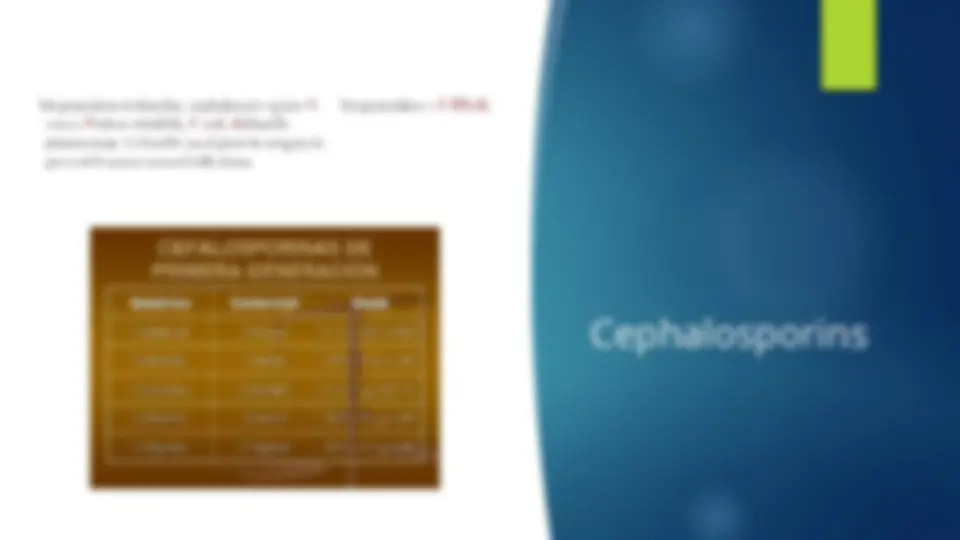
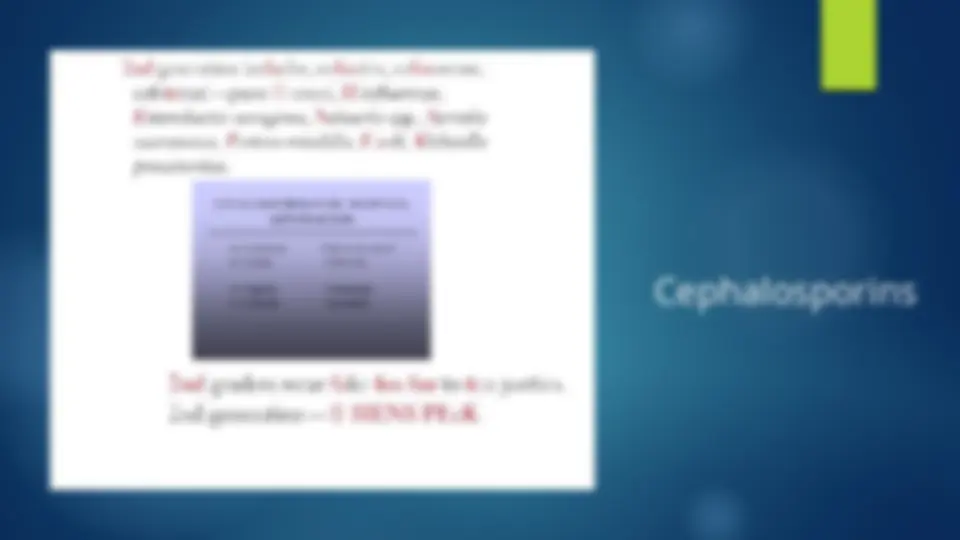
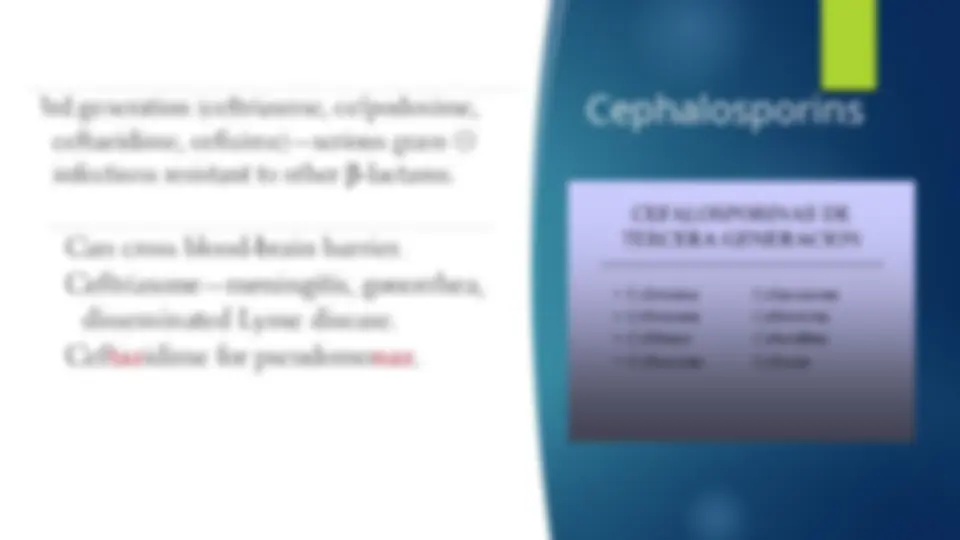
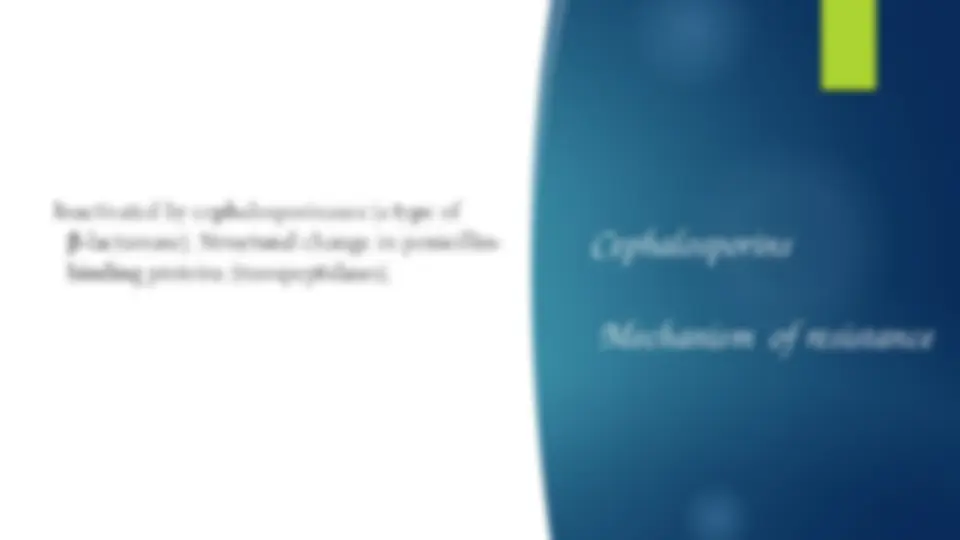
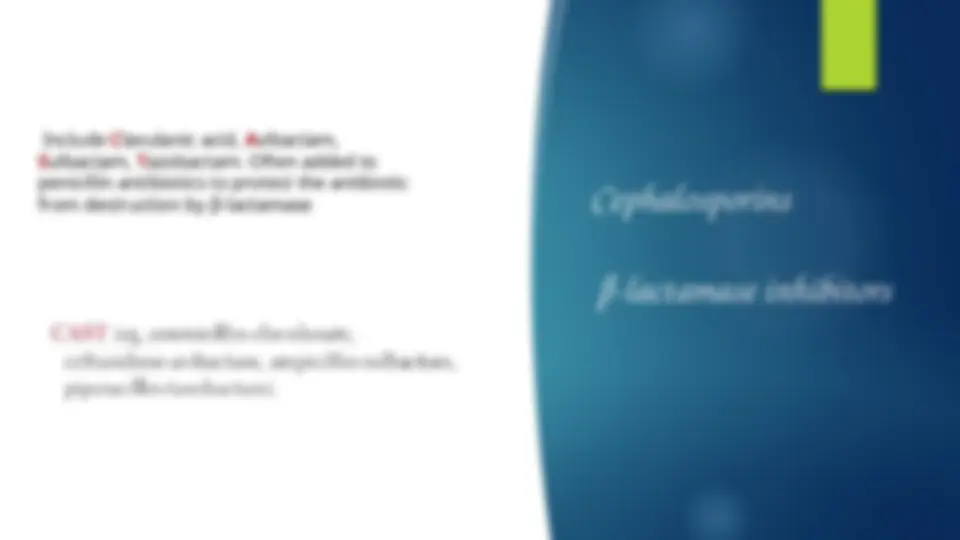
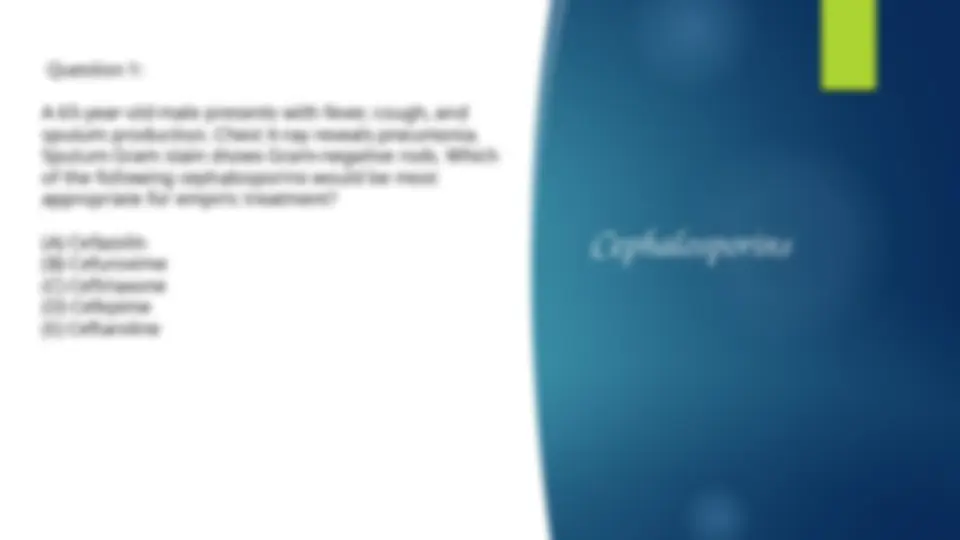
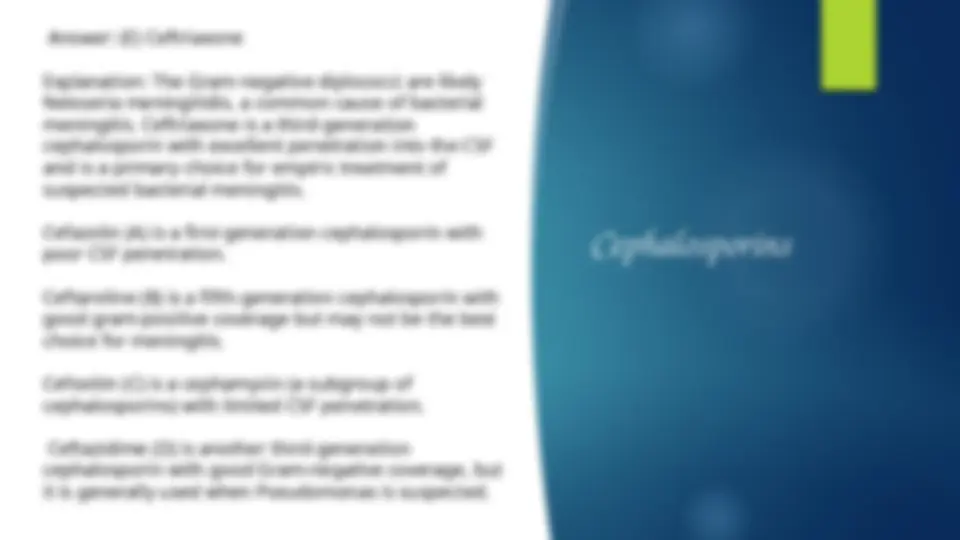
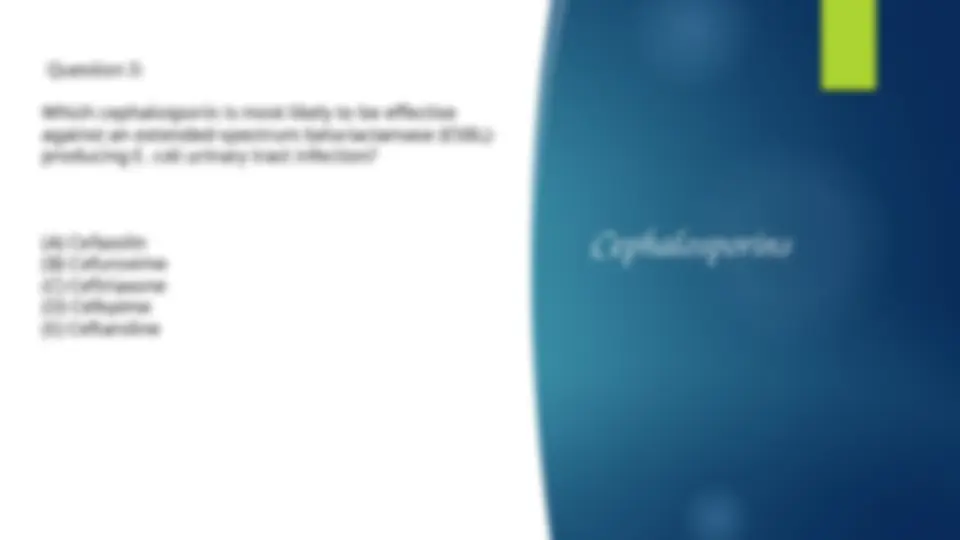
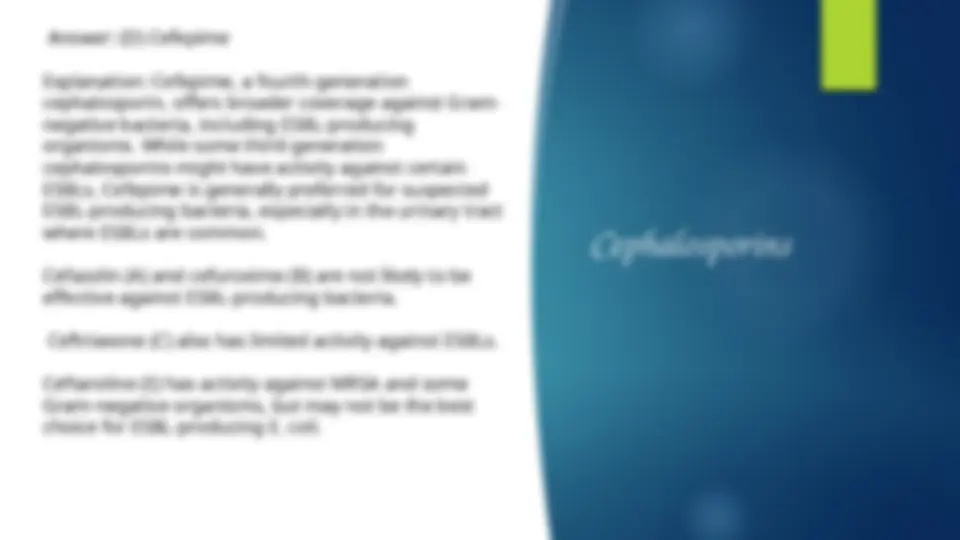



Study with the several resources on Docsity

Earn points by helping other students or get them with a premium plan


Prepare for your exams
Study with the several resources on Docsity

Earn points to download
Earn points by helping other students or get them with a premium plan
Community
Ask the community for help and clear up your study doubts
Discover the best universities in your country according to Docsity users
Free resources
Download our free guides on studying techniques, anxiety management strategies, and thesis advice from Docsity tutors
Tipos de Cefalosporinas y acción sobre microorganismos, realizado en power point, utilizando el First aid 2025 del USMLE como base, del tema farmacologia y microbiologia, del año 2025.
Typology: Summaries
1 / 18

This page cannot be seen from the preview
Don't miss anything!











Cephalosporins
Cephalosporins
Cephalosporins Adverse effects
Cephalosporins Mechanism of resistance
Cephalosporins Question 1: A 65-year-old male presents with fever, cough, and sputum production. Chest X-ray reveals pneumonia. Sputum Gram stain shows Gram-negative rods. Which of the following cephalosporins would be most appropriate for empiric treatment? (A) Cefazolin (B) Cefuroxime (C) Ceftriaxone (D) Cefepime (E) Ceftaroline
Cephalosporins Answer: (C) Ceftriaxone Explanation: Ceftriaxone is a third-generation cephalosporin with good activity against Gram- negative bacteria, including many that cause pneumonia, such as Haemophilus influenzae and Streptococcus pneumoniae. Cefazolin (A) is a first-generation cephalosporin with better activity against Gram-positive bacteria. Cefuroxime (B) is a second-generation cephalosporin that may have some activity against H. influenzae, but is less potent than third-generation agents. Cefepime (D) is a fourth-generation cephalosporin with broader Gram-negative coverage and enhanced activity against Pseudomonas aeruginosa, but is generally reserved for more severe infections or those with suspected resistance. Ceftaroline (E) is a fifth- generation cephalosporin with activity against MRSA, but not the most appropriate initial choice for typical pneumonia.
Cephalosporins Answer: (E) Ceftriaxone Explanation: The Gram-negative diplococci are likely Neisseria meningitidis, a common cause of bacterial meningitis. Ceftriaxone is a third-generation cephalosporin with excellent penetration into the CSF and is a primary choice for empiric treatment of suspected bacterial meningitis. Cefazolin (A) is a first-generation cephalosporin with poor CSF penetration. Ceftaroline (B) is a fifth-generation cephalosporin with good gram-positive coverage but may not be the best choice for meningitis. Cefoxitin (C) is a cephamycin (a subgroup of cephalosporins) with limited CSF penetration. Ceftazidime (D) is another third-generation cephalosporin with good Gram-negative coverage, but it is generally used when Pseudomonas is suspected.
Cephalosporins Question 3: Which cephalosporin is most likely to be effective against an extended-spectrum beta-lactamase (ESBL)- producing E. coli urinary tract infection? (A) Cefazolin (B) Cefuroxime (C) Ceftriaxone (D) Cefepime (E) Ceftaroline
Cephalosporins Question 4: A 72-year-old patient with a history of penicillin allergy is admitted to the hospital with a severe skin and soft tissue infection. Which of the following cephalosporins is contraindicated due to cross-reactivity with penicillin? (A) Cefazolin (B) Ceftaroline (C) Cefepime (D) Ceftriaxone (E) Cefuroxime
Cephalosporins Answer: (A) Cefazolin Explanation: Cefazolin is a first-generation cephalosporin that has the highest risk of cross- reactivity with penicillin due to its structural similarity.